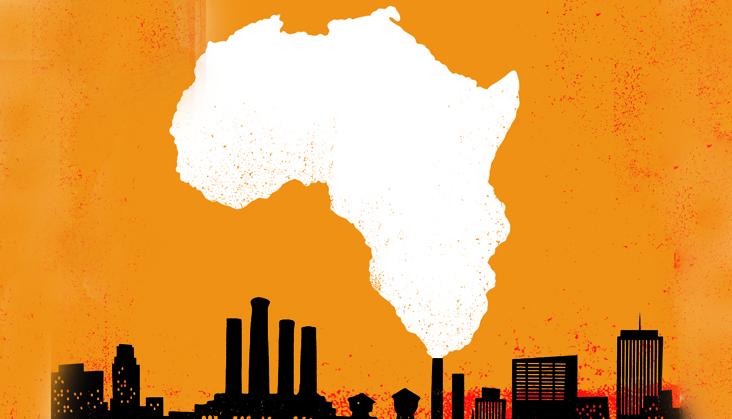Africa-Press – Mauritius. You won’t have missed the nationalist mood engulfing big economies around the world: the US, Britain, Brazil, France and Germany are all stained by proto-fascists in and around power.
Politicians in these countries talk of taking back control of borders; they are keen to identify those who should and should not receive state support. But the politicians of Africa are headed in a different direction.
Far from erecting walls, they want to build “the world’s largest free trade area since the formation of the World Trade Organisation”, according to Sierra Leone’s trade minister Peter Bayuku Konte.
The African Continental Free Trade Area, sporting the catchy acronym AfCFTA is an African market that is 1.2 billion people strong and has a gross domestic product of $2.5trn.
Sierra Leone signed up to become a member on 7 November. It is a bold step by the continent’s leaders. A “new chapter in African unity”, according to Rwanda’s President Paul Kagame, the energetic chair of the African Union (AU).
He has been remarkably successful in whipping into line so many peers. Experts agree. “This level of diplomatic and political support for regional integration and trade has not been seen in Africa for a long time,” says Trudi Hartzenberg, executive director of the Trade Law Centre, which is based in South Africa.
The economics certainly appear to stack up. Tiny fragmented African markets cannot hope to compete for global capital. And Africa’s most successful regional economic bloc, the East African Community, has been attracting great interest from foreign investors precisely because it is easy to trade across borders in the area.
But the process is stalling. Though 44 leaders signed AfCFTA’s original treaty, ratification has been slow. Sierra Leone was just the 12th to date. This has partly been because the big economies have been tepid, at best, in their support.
President Muhammadu Buhari of Nigeria, commenting on Twitter, said: “We will not agree to anything that will undermine local manufacturers and entrepreneurs, or that may lead to Nigeria becoming a dumping ground for finished goods.
” South Africa’s President Cyril Ramaphosa said he definitely was up for it – but just had to check with his parliament first. There are also roadblocks below.
“There might well be agreement at the top level, but as soon as you get a few rungs down, there are people who say, ‘Yes, well those Tanzanians, don’t you remember what they did to us?’, or ‘Those Kenyans, can they be trusted?’,” says a Kenyan diplomat based in a Nordic country who requests anonymity.
“And that’s a problem because that is the level that implementation actually happens.
” He is not pessimistic, however. He points to the small things like the East African passport, which is a sign that integration is finally starting to happen. There has also been resistance from big manufacturers who benefit from monopoly conditions at home to build their fabulous wealth.
Despite public protestations to the contrary, Nigeria’s most successful building materials manufacturers have domestic margins far greater than even the African average. Why surrender that to lower-cost South African counterparts?
And in these pages, Zimbabwean tycoon Shingai Mutasa says he believes certain sectors such as steel and chemicals require states to offer some protection to emergent industrialists while they establish themselves (see page 72).
The Trade Law Centre’s Hartzenberg agrees that lobbying and educating Africa’s private sector should be far higher up the priority list: “In many countries, it is still not common practice that the private sector is actively engaged by government on the negotiations or kept up to date on the progress or challenges in the negotiations.
” Bringing big business into the big tent might be a start. But beyond the private sector, there are still those in government who are not entirely sold on the concept.
They point to those successful countries that have used industrial policy to develop. Japan, South Korea and China were all accused of being protectionist during their high-growth period.
Japan did everything in its power to prevent American cars being sold to Tokyo residents while Toyota and Nissan were in their infancy. When they became world-beaters, the Japanese suddenly started to discover an interest in free markets.
Seeing China’s Premier Xi Jinping suddenly defending globalisation at his first Davos speech in 2017, after decades of deliberate under-valuation of the currency, had irony klaxons blaring once again.
When he compared protectionism to “locking oneself in a dark room”, it was probably not a reference to the Uighurs. Nevertheless, those nostalgic for industrial policy’s past should probably check their statist ambitions.
With value chains in industry crossing borders, it is harder now to target an individual sector without the inevitable piling up of white elephants. It’s not impossible, as Morocco’s flourishing auto sector can testify.
But protection remains no substitute for skills development and decent infrastructure. Perhaps the best approach is incremental and not ‘big bang’. To get over the tepid private sector response and bind in those sluggard administrations, one approach could be the historical precursor to the European Union (EU): the European Coal and Steel Community.
Once the trust was built with a few basic goods, ever-greater levels of sophistication and requirements were added. The EU is now worth $18.8trn. Africa has some power pools, but they face similar integration challenges.
“I call them the big brother utility club,” says Linda Mabhena-Olagunju, who founded independent power producer DLO Energy Resources Group in South Africa. She says there is strong demand for power in surrounding countries.
But it is demand that she and her company are unable to meet because the international interconnections are owned by poorly-managed state power utility Eskom, which currently makes a great deal of money from exporting power abroad.
“If we are serious about moving the economies of our continent forward, collaboration is the only way to do it,” says Mabhena-Olagunju.
“It is only the beginning. These are innovations,” says Abdoulie Janneh, a former diplomat now executive director of the Mo Ibrahim Foundation, who remains positive.
“These are areas that we are only just venturing into. Do not think they will just happen overnight. ” They need to happen soon, ideally by 31 January 2019, when the next chair of the AU accedes to the position. Up next is Egypt’s President Abdel Fattah al-Sisi – who has not been full-throated in his support for AfCFTA.
For More News And Analysis About Mauritius Follow Africa-Press







